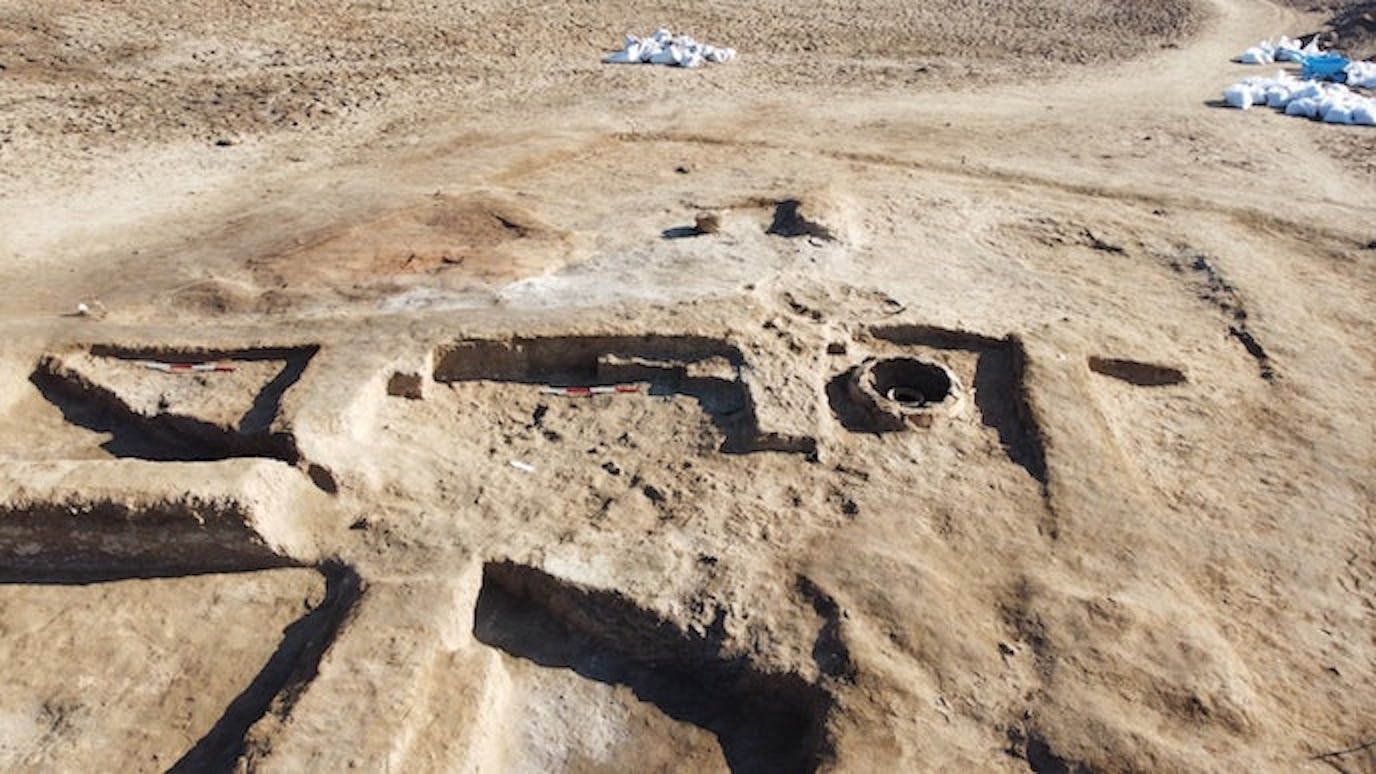| |
| | Half the World Cooks With Toxic Solid Fuels — But That Could ChangeLast year, archaeologists combing the ancient Sumerian city of Lagash (located in modern-day southern Iraq) unearthed the remnants of a 4,700-year-old restaurant. Within its walls, those researchers uncovered benches, storage vessels, and even an ancient oven. Millennia before people switched on gas stoves, electric ranges, or microwaves, that tavern’s mighty cooks of old might have fed this oven’s flames with wood or dried animal poop. Nowadays, large parts of the world don't look too different: Nearly half of people around the globe cook with these types of solid fuels, according to a 2019 report from the Health Effects Institute. Solid fuels are pretty labor-intensive; somebody has to chop the wood or prepare the dung (or buy it, at great expense). Fuels derived from living matter (also called biofuels) taint the air with carbon dioxide emissions and toxins like carbon monoxide, benzene, and formaldehyde. Kitchens are often indoors, so those pollutants stay indoors too, increasing people’s odds of developing conditions like asthma and lung cancer. |
|
|
| |
|
| | | In fact, indoor air pollution can be attributed to 4.1 percent of all deaths worldwide in 2019, according to Our World in Data. Women and children, whom tradition might bid to do the bulk of the housework, experience the brunt of these health impacts. To reduce threats to people’s health, development advocates and nonprofits have long sought to help people in developing nations access safer cooking methods. One popular alternative: liquefied petroleum gas (LPG), a blend usually made from propane and butane and sometimes spiced with other petroleum or natural gas products. But encouraging large populations of people to cook with fossil fuels could have massive environmental consequences. That’s why designers are already thinking about low-energy electric devices that can bring sustainable, healthier cooking to households around the globe. |
|
|
| |
|
| | An imperfect solutionLPG certainly offers tangible benefits. It reduces health impacts because people cooking with this gas don’t receive the same regular exposure to carbon monoxide and other common indoor pollutants. Still, LPG leaves a few bitter notes. People using LPG need to periodically refuel, but new canisters can be expensive — one canister may cost weeks’ worth of a household’s income — and difficult to find outside of major cities. “You go to some rural areas, they do not have any nearby shop where people can go to refill gas cylinders,” Michael Dioha, an energy analyst at the Carnegie Institution for Science, tells Inverse. And LPG is a fossil fuel that’s vulnerable to the fickle winds of geopolitics and uncaring markets. The Russian invasion of Ukraine, for instance, has thrown a wrench in supply chains. When Eddie Cienda, director of the Virginia-based renewables company Congo Green Energy, grew up in the Democratic Republic of the Congo, it typically took his family two weeks to obtain a fresh batch of LPG. “Now, with the war, it takes, sometimes, a month and a half,” he tells Inverse. And when LPG becomes scarce, households may revert to traditional biofuels. What’s more, LPG doesn’t eliminate all pollutants, and public health experts are increasingly concerned about LPG’s long-term impacts. One of its byproducts is nitrogen dioxide, a noxious compound that researchers have linked to respiratory problems — which has fueled the recent uproar against gas stoves in the developed world. So what, then, might replace LPG? |
|
|
| |
|
| | | | Enter the electric pressure cooker. It’s a cult commodity in Europe and North America, where Instant Pots grace many a kitchen counter. Since around 2015, a UK-based research program led by Loughborough University called Modern Energy Cooking Services (MECS) has promoted similar gizmos in South Asia and sub-Saharan Africa. “We spotted their energy efficiency potential,” Simon Batchelor, a development researcher with MECS and Loughborough University in the U.K., tells Inverse. Electric pressure cookers offer some compelling safety and sustainability features. For one, some devices automatically shut off when they reach proper temperatures and pressures, tightly regulating how much energy it uses to cook food. And the pot may come with an air gap between the cooking vessel and the outside, providing helpful insulation. |
|
|
| |
|
| |  | “We spotted their energy efficiency potential.” |
|  |
|
| |
|
| | As a result, these devices are relatively cheap to run. One of MECS’ tasks, then, has been to work with locals and governments to demonstrate that a cooker developed in and for the West can still be used to craft traditional dishes in countries such as Ghana or Uganda or Tanzania. (To that end, MECS has published a line of free cookbooks.) In 2021, Uganda’s government introduced a financial appetizer: cheaper electricity for electric cooks. Uganda likely won’t become a nation of pressure cookers quite yet. For now, they’re still relatively expensive because they’re not manufactured locally. And pressure cookers can’t do everything: As Batchelor points out, you can fry onions in one, but you’ll have a much harder time making an omelette. So pressure cookers will need a handy partner. |
|
|
| |
|
| | Clean cooking with a costThat’s where the induction cooktop may come in. Induction stoves work by shooting a rapidly alternating electrical current through a coil of wire under the surface. This electron dance induces another electric current in the base of the vessel above, which turns into heat. For the physics to pan out, induction cooktops need cookware that has magnetizable metal in its base, such as cast iron or stainless steel (in this case, most aluminum or copper pans won’t work). This type of appliance now fills high-end kitchens in pricey cities like New York, which will ban gas stoves in many new buildings after 2024. But outside of fancy dwellings, induction stoves could have a major impact on underserved communities. Take Ecuador, for example: In 2014, its government kicked off a program encouraging households to swap their old stoves for induction — a move meant in part to reduce LPG imports. |
|
|
| |
|
| |  | It seems likely that the high costs discouraged many households. |  |
|
|
| |
|
| | Around 750,000 Ecuadorian households (around 12 percent of the country) have since made the switch, researchers found. Ecuadorians who did use induction were exposed to 25 percent less nitrogen dioxide, the same researchers found. (Similarly, research in a New York City pilot study observed a 35 percent drop in daily concentrations of the compound). Despite the early success, the Ecuadorian officials had hoped to switch a whole 3.5 million households to induction cooking by 2017. Again, cost is a factor: These stoves can run for over $500 — just above the country’s minimum monthly income. “It seems likely that the high costs discouraged many households from acquiring an induction stove,” Carlos Gould, an environmental health scientist at Stanford who has studied Ecuador’s program, tells Inverse. Ecuador isn’t the only government looking to switch up appliances throughout the country. Indonesia and Nepal have also introduced programs to fire up interest in induction. |
|
|
| |
|
| | | | Electric cooking sounds great in theory — but there’s a major hurdle to execution: Hundreds of millions of people still lack electricity in their homes, most of them living in sub-Saharan Africa. A village might be considered “electrified” even if the power only runs for a few hours a day. And most households tend to cook around the same times, putting pressure on vulnerable electric grids. In nearly fully electrified Ecuador, for instance, Gould and colleagues found that the country’s electric cooks increased national power demand by 5 percent — but by 15 percent around major mealtimes. “We’re going from relatively little spikes in electricity throughout the day to really big ones,” Gould says. “I think that’s a major concern for promoting electric cooking in low- and middle-income countries.” A D.C.-based company called SUNSPOT thinks it has a solution: attaching an induction cooker to a battery and solar energy setup. The solar setup, which consists of photovoltaic panels, allows the stove to run without any outside power. Today’s solar panels generate more energy than the stove needs, so after the appliance consumes its slice of power, people can use leftover power to charge a phone — or store it in a battery for a rainy day. Ultimately, battery-powered mini electric grids could allow villages to cook at all times of the day. |
|
|
| |
|
| | In 2020, SUNSPOT successfully tested its concept in Les Anglais, a small town in southwestern Haiti. Now, they’re hoping to conduct further tests in new locations. “We’re still trying to get that first project kicked off,” SUNSPOT’s co-founder Doug Danley tells Inverse. Danley feels encouraged by the fact that renewable energy has become so cheap, so quickly. Solar cells have plunged orders of magnitude in cost in the last several decades, and battery prices have plummeted in close formation. “I’ve seen a lot of things happen over a 40-year career in solar — some of which I never thought would happen,” Danley tells Inverse. For now, most countries will likely need time to let these clean cooking ideas simmer. After all, experts say it’s unrealistic (and perhaps impossible) for governments to up and ban gas stoves. Ultimately, kitchen makeovers will likely look vastly different around the world. But if we can achieve low-cost, low-energy, truly green cooking, all households should be able to take full advantage of it, Dioha says. |
|
|
| |
|
| | Share HorizonsEnjoy reading this newsletter? Share it with a friend. This has been HORIZONS, a newsletter that explores the innovations of today shaping the world of tomorrow. Do you think it can be improved? Have a story idea? Send your tips and all other musings to horizons@inverse.com |
|
|
| |
|
|
|
| |
|








